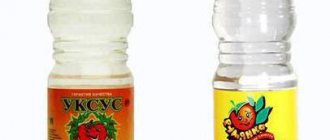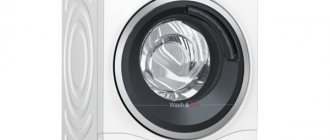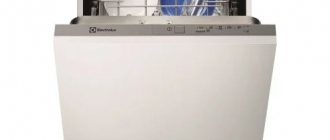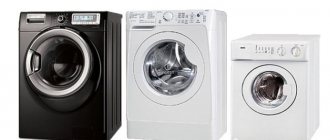Cleaning a washing machine is a mandatory procedure for people who want to use their assistant for many years ✔. However, you need to know how to clean a washing machine with citric acid and other means. Otherwise, you may make mistakes that will be difficult to correct.
Properties of citric acid
Cleaning contaminated mechanisms can be done in different ways. This can be done mechanically by scraping off the scale, for example, with a knife. However, it is not always possible and not everywhere to free the car from salts and dirt. Periodically, as a preventive measure and emergency measures, it is necessary to use products that dissolve accumulations of unnecessary substances.
Limonka combines the properties of efficiency, versatility and low cost. It dissolves calcium and magnesium carbonates. These salts appear as scale on various parts of the machine. As a result of the interaction of acid with salts, citrates are formed, which dissolve in water and are easily removed from the washing machine.
The acid will also help get rid of mold and the accumulation of other microorganisms. Disinfection will be especially effective if you use not only citric or acetic acid, but also soda.
Where does scale come from?
Hard water causes the formation of limescale deposits, which can cause an automatic washing machine (AWA) to break down or fail prematurely. Calcium and magnesium salts, settling on the heating element and other parts of the machine, form a coarse limescale deposit, better known as scale. There are many special cleaning and preventive products produced by the industry, including the washing machine manufacturers themselves.
Increased formation of limescale is promoted by high water temperatures. The more often you wash in hot water, the faster the “insides” of the machine become covered with solid sediment. Poor quality water flowing from taps is the cause of the limescale layer on the internal parts of the SMA. If the water were clean, the problem simply wouldn't exist. Scale is dealt with in different ways - prevented or eliminated. Lemon has long been used by housewives to clean limescale from teapots. As it turns out, it can also be successfully used to clean washing machines.
When do you need to cleanse with lemon?
There is a pattern: the more complex the equipment, the greater the likelihood of it breaking. Each wash brings into all the mechanisms of the machine not only dirt from things, but also minerals dissolved in water. In addition, a humid environment promotes the proliferation of microorganisms that accumulate in places where detergents do not penetrate well.
It is necessary to clean the washing machine with citric acid if a layer of solid deposits is noticed on the heating element. Plaque on it is the most common cause of machine breakdown or difficulties with the operation of equipment. In addition, scale and other deposits may form on the surface of the drum. The first signs of their formation are a reason to clean the washer with citric acid.
Why clean your washing machine with citric acid?
It’s not difficult to follow step-by-step instructions on how to clean a washing machine with citric acid. The question arises: why is this necessary? Most often, the water supplied through pipes has a high percentage of salts and impurities. During heating, the salt contained in the water settles on the surface of the heating element, and scale appears. The same thing happens with dishwashers and electric kettles.
If you do not descale the appliance in time, this will increase the time it takes to heat the water. Consequently, electricity consumption will increase. It is also possible that the heating element may burn out. For this reason, maintenance of the automatic washing machine must be carried out in a timely and efficient manner.
Using citric acid, you can effectively descale the heating element and drum of your washing machine. When the water heats up, the acid reacts with the scale and breaks it down. Scale flakes fall off the equipment parts and are washed off with water.
Pros and cons of the product
Using a lemon juicer to clean small deposits from your car is a good way to solve problems cheaply and effectively. The combination of acid and soda increases the level of this effectiveness. It is especially recommended to use these products to prevent the formation of unwanted deposits.
If the salt layer turns out to be too thick, then it is necessary to use strong products made specifically for such cases. Cleaning the machine in such conditions will take a long time, which entails the risk of increased wear of the most sensitive parts.
It is believed that lemon used at home is harmless. However, it is still an acid. It corrodes rubber seals and even some metal parts. This destructive effect, compared, for example, with hydrochloric acid, may seem insignificant, but with frequent use of lemon juice, the risk of negative consequences increases.
If the acid is introduced not as a solution, but as a powder, then the crystals can accumulate in the pocket of the rubber cuff that seals the door. You need to monitor this situation and if signs of powder accumulation appear, wash all folds of the cuff.
If the drum cross is made of silumin, then when exposed to aggressive substances, cracks may appear in it, which entails the need for repairs.
However, in order to clean a washing machine with citric acid, you do not need a large amount of this product. Yes, and it is difficult to consider this substance aggressive. This acid is considered the most harmless agent that does not cause significant harm to the mechanisms being cleaned.
How much citric acid to add?
To clean an average washing machine in order to prevent or remove small deposits, you need to have 100-200 g of acid. The exact dosage must be calculated according to the degree of contamination and the volume of the machine.
For a container designed for 5 kg, it is necessary to use 150 g of acid. A machine designed for 6 kg requires the use of 200 grams of cleaning agent. These parameters are designed for average levels of pollution.
If the water you use is particularly hard, and a large amount of what shouldn’t be there has accumulated inside the machine, the dosage can be increased slightly. However, you need to put no more than 20 g of acid per 1 kg of calculated capacity. This proportion is based on the balance of the strength of the cleaning agent and the amount of possible damage caused to the machine’s mechanisms.
How to clean a washing machine with citric acid?
Using a lemon you can clean not only the drum and other internal elements of the washing machine, but also the powder compartment, gaskets and door. For this purpose you need to prepare:
- 100 g of substance;
- a cloth that effectively absorbs moisture.
To clean your washing machine effectively, you need to follow several steps.
Step 1: Prepare for Cleaning
First you need to remove all the things from the drum and check its condition. After this, you need to take 100 g of acid for equipment with a load of no more than 6 kg.
To clean the washing machine with citric acid, you can take a substance diluted in water or a crystalline substance. Diluted lemon is more preferable because... when using it, the crystals will not get stuck in the internal elements of the equipment. 100 g of the substance must be diluted in 0.5 liters of slightly heated water. However, a soluble product is not suitable for cleaning equipment in which residual liquid under the drum element is pumped out before operation.
Step 2: loading acid and turning on the washing machine
Powdered lemon is placed in the washing powder compartment. The soluble product is poured into the drum with the door open.
Washing equipment must be run on an extremely long cycle. The optimal washing temperature with the addition of lemon is +90...+95°C. In this case, there must be at least 3 rinses.
Step 3: Removing Crystalline Acid Residues
After filling the equipment with liquid, you need to close the compartment for loading washing powder and apply the remaining lemon juice to its walls. After half an hour or an hour, you need to treat this compartment with a dampened cloth, eliminating the deposits that have formed. The acid must be removed before the rinse cycle starts.
Step 4: Inspect the Washing Machine
After finishing washing, you need to dry the interior. Additionally, you need to wipe the rubberized cuffs with a dry cloth.
Seals and doors should also be wiped with a cloth treated with 1% lemon juice concentrate.
Cleaning procedure
In order to understand how to descale a machine, you need to imagine the complex structure of a washing unit in the form of a kettle with a drum. This means that you can clean the washing machine in the same way as a kettle. Only in this case a different proportion of ingredients is used.
Citric acid should be loaded into the washing machine without laundry and detergents. Otherwise, the entire cleaning process will result in your laundry acquiring a lemon scent. You can wash things with this acid, and this will have a positive effect on the condition of the drum and heating element. However, this should only be done in a situation where the water used is highly mineralized. This will allow sediment to form immediately during the washing process. A good rinse after washing helps remove salts rather than allowing them to accumulate inside the machine.
However, if there is a need to remove already accumulated sediment, you need to clean the washing machine at idle speed, that is, without laundry. In this case, nothing will prevent the acid from interacting with salts and accumulated dirt.
To clean, you need to perform the following algorithm:
- instead of washing powder, you need to pour acid in the amount described above;
- then you need to run the machine in the washing mode with hot water (the temperature should be at least 90 degrees);
- the run time should last at least 40 minutes;
- Finally, drain the water and acid and rinse the machine with clean water.
These recommendations are based on average conditions. However, the machine does not tolerate empty washes, so put several rags in the container. A little acid won't do anything to them.
The effectiveness of the action can be assessed by the turbidity of the water, as well as by the condition of the heating element and drum.
If the effect does not satisfy you, then you need to repeat the procedure after the car is completely washed from the previous acid treatment. Surfaces that are not part of the internal mechanisms should also be washed. This is especially true for plastic and rubber parts, which suffer the most from exposure to aggressive environments.
Frequency of application
The frequency of cleaning the washing machine depends on the condition of the unit, the frequency of its use and the composition of the water used. An old car, which is used almost daily, needs preventive cleaning of dirt and limescale at least once every 3 months. If there are no obvious signs of deposit accumulation, then every 3 months you need to clean the mechanisms with hot water, running the machine for an idle wash. However, this must be done every 6 months using acid.
When assessing the frequency of use, the appropriateness and consequences of the actions should be taken into account. A fully cleaned machine can be used without problems for about a year. However, it is necessary to constantly check the condition of its most vulnerable components and parts.
From a safety point of view, you can clean your washing machine with citric acid at least every month. There will be no great harm from these actions if you do not use other cleansers.
Thus, the home method of cleaning a car using citric acid allows for preventive cleaning once every 6 months. If it is necessary to remove accumulated contaminants that threaten the operation of the machine, the product can be used regularly once every 3 months. More frequent use of acid may be dictated by extreme necessity. However, long-term use of the product once a month or more often is unacceptable. In this case, wear on the most vulnerable and important parts increases.











